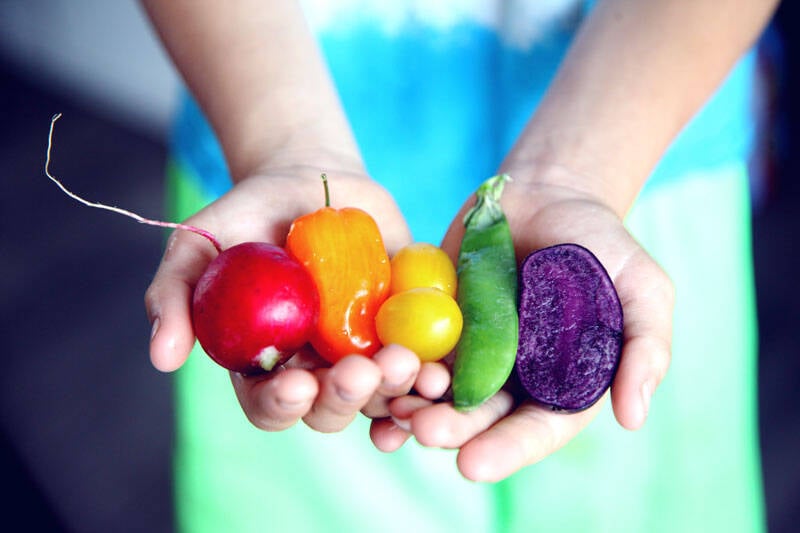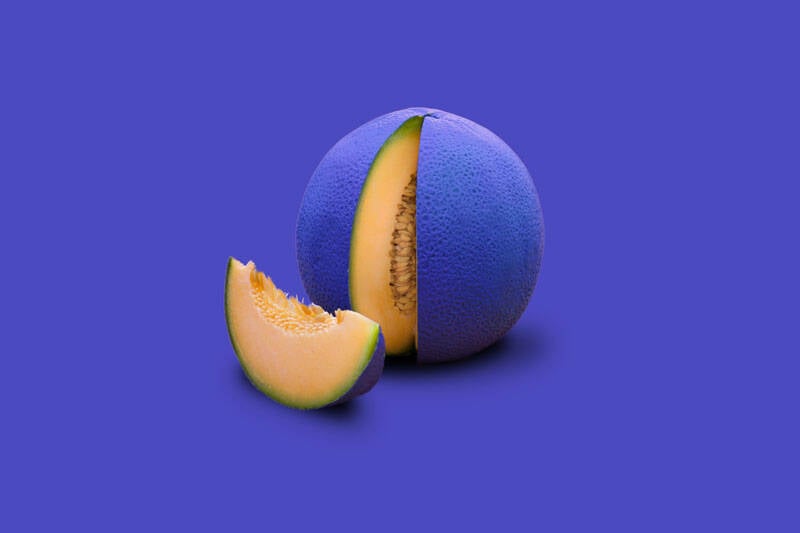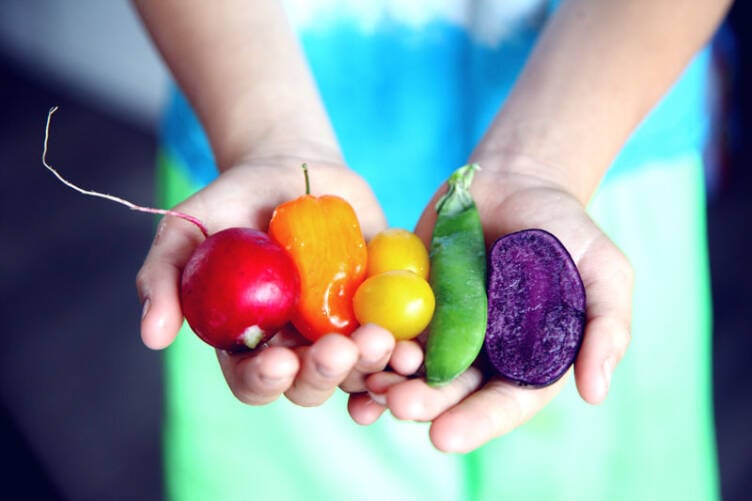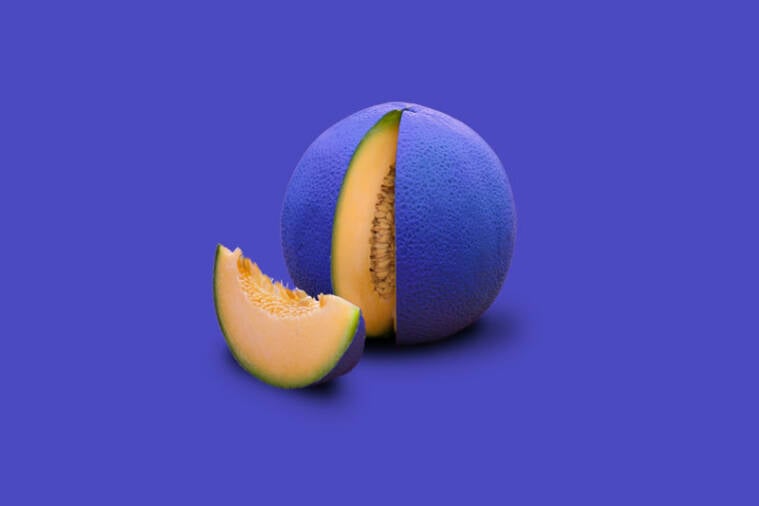
Color and recognition
Sometimes companies add artificial coloring to the food they produce. The reason that artificial colors are being added to our food is because we also taste with our brain. When the food has an appetizing color, you would want to eat that certain type of food even more. Which makes it attractive for companies to add artificial color to certain foods.
But artificial colors are also added to certain products to make sure people recognize them and have certain expectations about the quality. By making sure that their products have the same color every time, companies assure consumers that their product features consistent quality. For example, if the color of tomato ketchup would change from red to brown, consumers would question the quality of the product, but also the recipe or the process of how it’s made. Therefore, colors are extremely important in the food business.

Even though we like our food to be a certain color to recognize it, that’s not always the case. If you look at the rainbow bagels, the unicorn frappes or galaxy glazed donuts online you cannot deny their immense popularity. They’ve all got one thing in common: they’re extremely bright and colorful. According to an article in Our World at Gildshire.com these bright colors mimic the hues of fruits and vegetables that our brain sees as healthy, which probably explains why we are drawn to these ‘Instagrammable’ foods. Psychologist Rachael Goren-Watts also thinks these kinds of foods just make us happy. They integrate fun into our daily eating habits and can lift people's moods.
Color and taste
The color of food is just as important for our taste buds as the taste or smell. The color creates expectations about how something is going to taste. When we see something that’s yellow, for example: a lemon, we can almost taste that specific product. When the color of the lemon stays the same, but we change the taste of the product, our brain will still try to let us think we’re eating lemon. Even though we’re not. That’s because the expectations of the color and the taste that comes with that specific color are so strong, that the flavors anticipated become the ones you’ll experience. When you turn it around and change the color of the lemon to blue, it will taste different. That’s because when we do not recognize what we’re eating, we perceive the taste differently. Even though it is in fact the same lemon.



Color and appetite
Some colors are even said to affect your appetite. Take the color red for example. This color makes sure you will get hungrier, just like the colors orange and yellow do. Why, you ask? It’s because these colors cause your blood pressure to rise, which automatically makes you feel hungrier.
The color green does the exact opposite for most people. We associate green vegetables or seasonings with a bitter or sour taste that most people don’t really like. But the times are a-changin’, and the color green is on the rise. Health and healthy eating are becoming more and more important. So, whereas people might not have found the color green appetizing in the past, they might find themselves liking the greens on their plates now, because their brain associates the color with eating healthier and fresher food.
Then there’s blue. It is said that this specific color reduces appetite and hunger. It is even called the most unappetizing color of all. That’s because we do not see blue food that often, other than in foods like blueberries. It reminds most people of food that has gone bad.
The color of food is more important than you might think. In the report ‘On the psychological impact of food color’ the psychology behind colors is explained. Your brain connects certain colors to explicit emotions or behaviors. When it comes to food, colors are just as important.



Blue bananas, purple lemons or orange cauliflowers: doesn’t sound appetizing, now does it? We are very picky when it comes to the colors of the food that we eat. But why is it that when we eat red strawberries, it’s the most normal thing in the world, but when we eat purple cauliflower, we can’t wrap our minds around it. We found out why the color of food is so important.
Maartje Hopmans Xiao Er Kong
expert opinion
4 min
the color of ingredients

Color and recognition
Sometimes companies add artificial coloring to the food they produce. The reason that artificial colors are being added to our food is because we also taste with our brain. When the food has an appetizing color, you would want to eat that certain type of food even more. Which makes it attractive for companies to add artificial color to certain foods.
But artificial colors are also added to certain products to make sure people recognize them and have certain expectations about the quality. By making sure that their products have the same color every time, companies assure consumers that their product features consistent quality. For example, if the color of tomato ketchup would change from red to brown, consumers would question the quality of the product, but also the recipe or the process of how it’s made. Therefore, colors are extremely important in the food business.
Even though we like our food to be a certain color to recognize it, that’s not always the case. If you look at the rainbow bagels, the unicorn frappes or galaxy glazed donuts online you cannot deny their immense popularity. They’ve all got one thing in common: they’re extremely bright and colorful. According to an article in Our World at Gildshire.com these bright colors mimic the hues of fruits and vegetables that our brain sees as healthy, which probably explains why we are drawn to these ‘Instagrammable’ foods. Psychologist Rachael Goren-Watts also thinks these kinds of foods just make us happy. They integrate fun into our daily eating habits and can lift people's moods.
Color and taste
The color of food is just as important for our taste buds as the taste or smell. The color creates expectations about how something is going to taste. When we see something that’s yellow, for example: a lemon, we can almost taste that specific product. When the color of the lemon stays the same, but we change the taste of the product, our brain will still try to let us think we’re eating lemon. Even though we’re not. That’s because the expectations of the color and the taste that comes with that specific color are so strong, that the flavors anticipated become the ones you’ll experience. When you turn it around and change the color of the lemon to blue, it will taste different. That’s because when we do not recognize what we’re eating, we perceive the taste differently. Even though it is in fact the same lemon.



Color and appetite
Some colors are even said to affect your appetite. Take the color red for example. This color makes sure you will get hungrier, just like the colors orange and yellow do. Why, you ask? It’s because these colors cause your blood pressure to rise, which automatically makes you feel hungrier.
The color green does the exact opposite for most people. We associate green vegetables or seasonings with a bitter or sour taste that most people don’t really like. But the times are a-changin’, and the color green is on the rise. Health and healthy eating are becoming more and more important. So, whereas people might not have found the color green appetizing in the past, they might find themselves liking the greens on their plates now, because their brain associates the color with eating healthier and fresher food.
Then there’s blue. It is said that this specific color reduces appetite and hunger. It is even called the most unappetizing color of all. That’s because we do not see blue food that often, other than in foods like blueberries. It reminds most people of food that has gone bad.
The color of food is more important than you might think. In the report ‘On the psychological impact of food color’ the psychology behind colors is explained. Your brain connects certain colors to explicit emotions or behaviors. When it comes to food, colors are just as important.
Blue bananas, purple lemons or orange cauliflowers: doesn’t sound appetizing, now does it? We are very picky when it comes to the colors of the food that we eat. But why is it that when we eat red strawberries, it’s the most normal thing in the world, but when we eat purple cauliflower, we can’t wrap our minds around it. We found out why the color of food is so important.
Maartje Hopmans Xiao Er Kong



4 min









